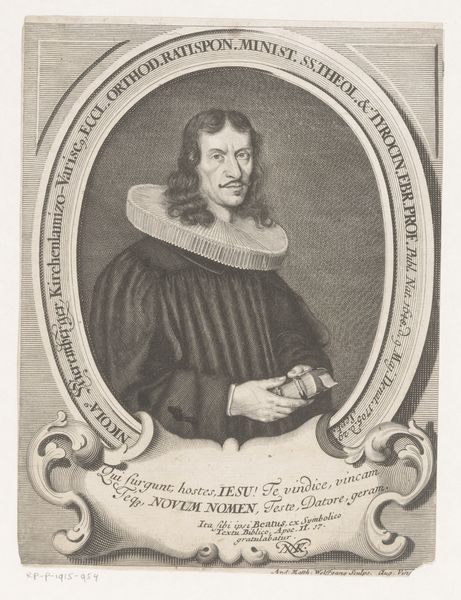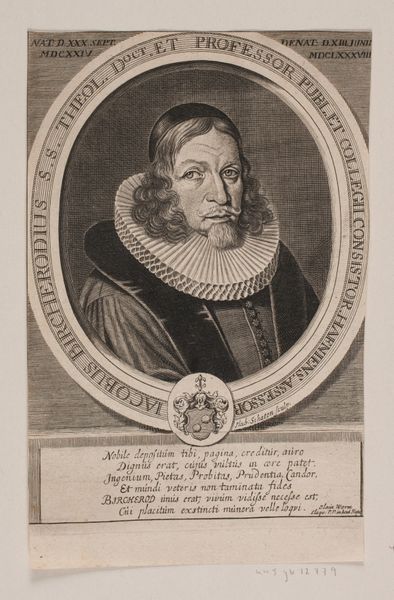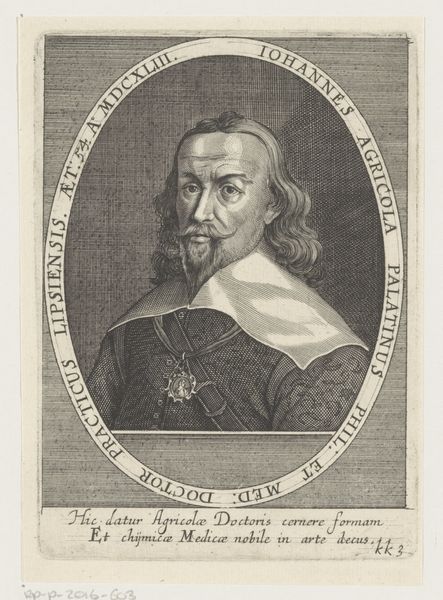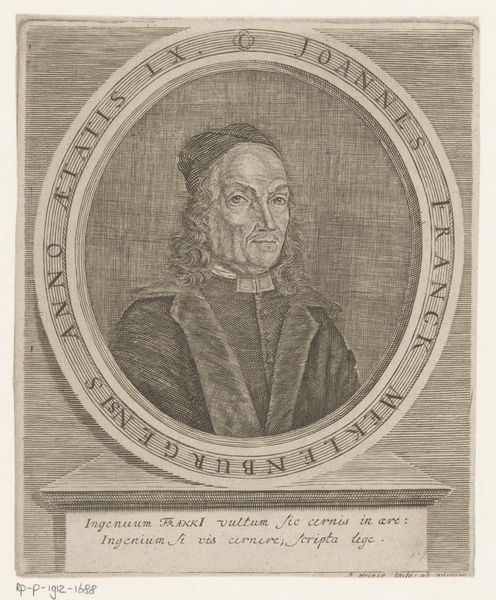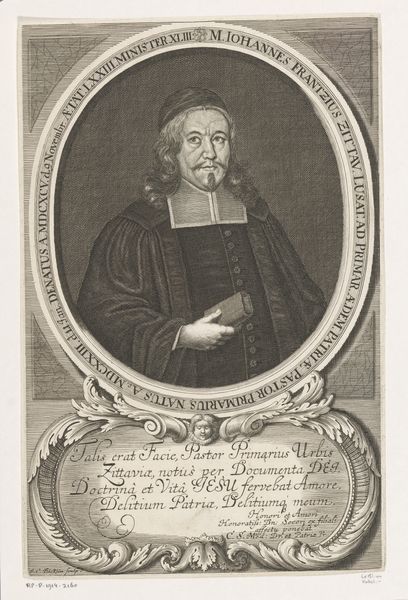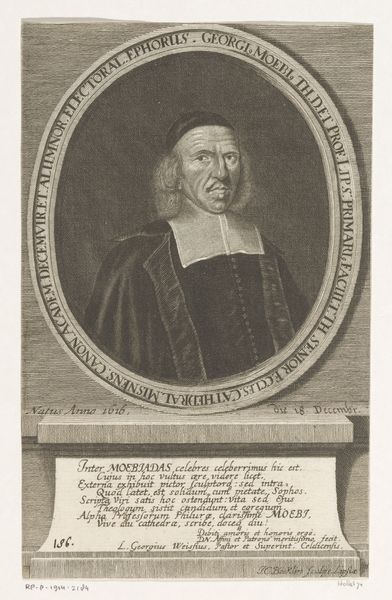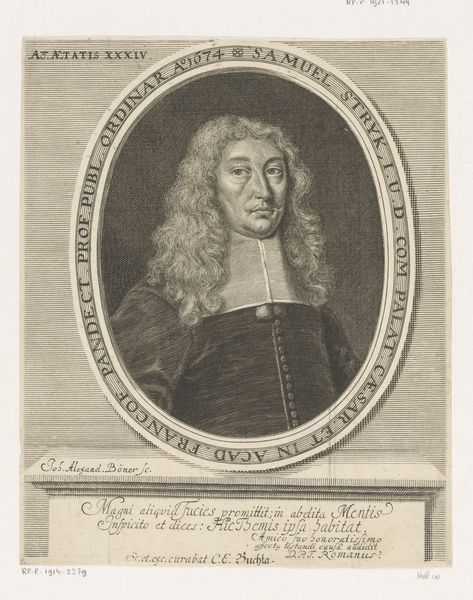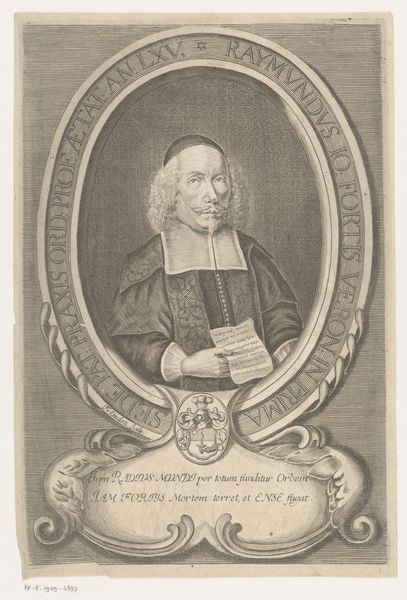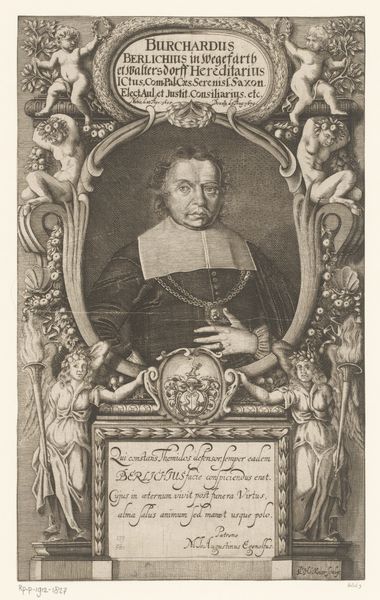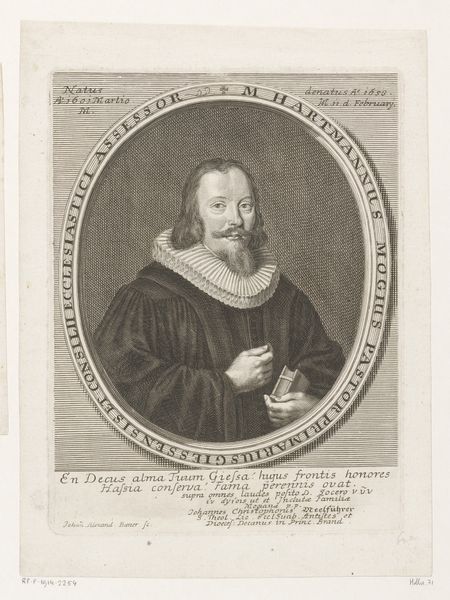
drawing, print, paper, engraving
#
portrait
#
drawing
#
baroque
# print
#
old engraving style
#
paper
#
historical photography
#
portrait reference
#
framed image
#
engraving
Dimensions: height 388 mm, width 287 mm
Copyright: Rijks Museum: Open Domain
Editor: Here we have a piece entitled "Portret van Johann Alberti," dating roughly from 1665 to 1721, attributed to Christian Romstet. It's an engraving, so primarily a work on paper. It strikes me as a very formal portrait, almost severe in its presentation. What do you see in this piece, looking at it from your perspective? Curator: What immediately grabs me is the intricate interplay between power, identity, and representation. It is very interesting to analyze how elites like Alberti had their images constructed and disseminated. Engravings like these were tools for projecting authority and cementing social hierarchies. Have you considered how the very act of commissioning such a portrait was a declaration of status? Editor: I hadn't thought about it that directly. It's like branding, almost? But for the 17th century. Curator: Exactly! Think about the symbolic weight of his clothing, his bearing, even the Latin inscriptions surrounding him. These weren't just decorative; they were carefully chosen signifiers intended to convey specific messages about his lineage, his virtues, his place in society. How might the intended audience of this print have interpreted these visual cues? Editor: I suppose they would have understood all those coded references, solidifying his position in their minds. Did prints like this also serve a political function, beyond just personal branding? Curator: Absolutely. In a period marked by religious and political conflict, portraits like this one became powerful tools for constructing and reinforcing alliances and allegiances. Notice the sitter's direct gaze, his unwavering expression. This is a man presented as resolute, dependable, a pillar of the existing order. Considering the broader societal anxieties of the time, can you imagine the sense of stability this image might have been intended to project? Editor: I see your point. It's far more than just a picture; it's an entire statement about power, class, and stability in a turbulent era. I hadn't considered the image as an intentional act of political communication, and how it really reflects intersectional anxieties and assertions. Curator: Precisely! By examining the layers of meaning embedded in this portrait, we gain insight not only into Alberti himself, but also into the complex social and political landscape of his time. It really emphasizes how visual art actively shapes how identity and social standing are asserted and interpreted within society.
Comments
No comments
Be the first to comment and join the conversation on the ultimate creative platform.
